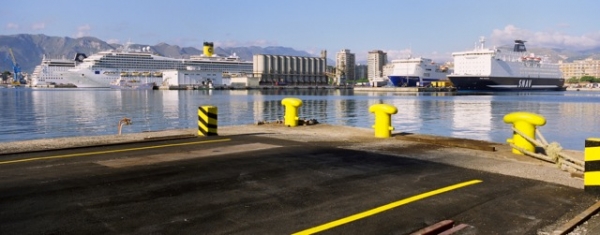The cruise industry has witnessed an uninterrupted growth over the last thirty years. An industry focused on the United States and the Caribbean emerged progressively as a global industry transporting close to 21 million passengers in 2013. While the global financial crisis of 2008–09 had a major impact over maritime shipping, cruise shipping and cruise ports continued to enjoy a steadily rising number of passengers.
This growth continues with innovative, feature-rich ships, the use of an increasing number of ports of call and turnaround ports, and convenient departures from nearby embarkation cities as fundamental tenets of the industry. While the image of cruising has not changed substantively, the industry has become a highly efficient business with the Caribbean and the Mediterranean Sea the most popular destinations. Passenger growth also occurred in secondary markets such as northern Europe, Alaska and South America. Cruises are becoming an ever more global business with large-scale developments also taking place in Asia and Africa. The globalization of the cruise industry appears to be unstoppable.
Still, there has been significant shifts in the organization and strategies of cruise lines, their customers, the size of the ships, the variety of onboard services, the planning and development of cruise ports, the organization of land-based operations and the perspectives of the various destinations hosting, or having the potential to host, cruise passengers.
As these trends in a sector combining both transportation and tourism elements deserve scholarly attention, PortEconomics co-directors Thanos Pallis and Theo Notteboom and PortEconomics member Jean-Paul Rodrigue edit a volume of the scientific Research in Transportation Business & Management (RTBM) on the theme “Cruises and Cruise Ports: Structures and Strategies”.
The contributions included in it address some of the important management issues faced by the industry in different parts of the world in an interdisciplinary manner. Extending discussions that have been held at events like the International Association of Maritime Economists (IAME), or within the special interest group of the association, the Port Performance Research Network (PPRN), leading maritime scholars generate knowledge on how cruise lines and cruise ports have developed their structures and strategies to efficiently and effectively serve the growth and the globalization of the industry and addresses the challenges this growth brings.
Table of Contents
The table of contents is as follows:
- Cruises and cruise ports: Structures and strategies, by Athanasios A. Pallis, Jean-Paul Rodrigue, Theo E. Notteboom,
- Turkey’s potential on becoming a cruise hub for the East Mediterranean Region: The case of Istanbul, by Oguz Bagis and Michaël Dooms
- Cruise terminals site selection process: An institutional analysis of the Kai Tak Cruise Terminal in Hong Kong, by Yui-yip Lau, Ka-chai Tam, Adolf K.Y. Ng, Athanasios A. Pallis
- Power in the context of cruise destination stakeholders’ interrelationships, by Wendy R. London and Gui Lohmann
- Incentives in cruise terminal concession contracts, by Grace W.Y. Wang, Athanasios A. Pallis, Theo E. Notteboom
- Cruise carrying capacity: A conceptual approach, by Evangelia Stefanidaki, Maria Lekakou
- Destination satisfaction and cruiser behaviour: The moderating effect of excursion package, by Francesco Parola, Giovanni Satta, Lara Penco, Luca Persico
- Understanding the causes of recent cruise ship mishaps and disasters, by Joan P. Mileski, Grace Wang, L. Lamar Beacham IV
- River tourism development: The case of the port of Brussels, by Mitchell van Balen, Michael Dooms, Elvira Haezendonck
PortEconomics provides you the Guest Editorial and invites you to to access all studies @ the RTMB website.












